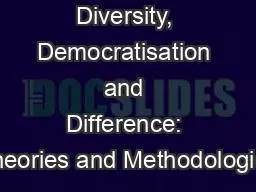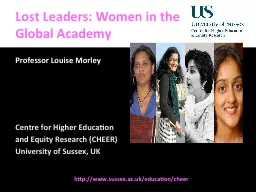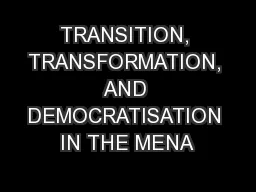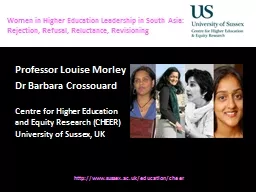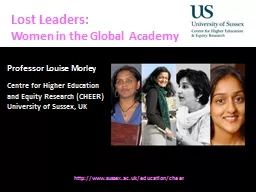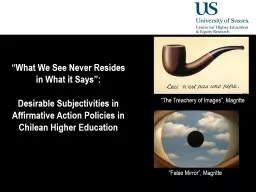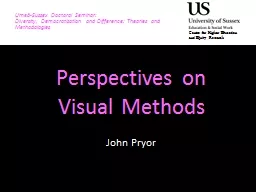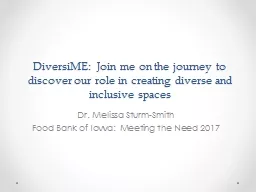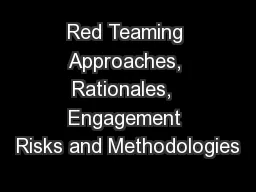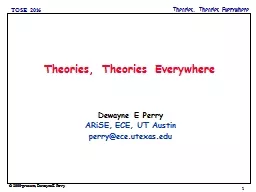PPT-Diversity, Democratisation and Difference: Theories and Methodologies
Author : blondiental | Published Date : 2020-08-28
Lost Leaders Women in the Global Academy Professor Louise Morley Centre for Higher Education and Equity Research CHEER University of Sussex UK httpwwwsussexacukeducationcheer
Presentation Embed Code
Download Presentation
Download Presentation The PPT/PDF document "Diversity, Democratisation and Differenc..." is the property of its rightful owner. Permission is granted to download and print the materials on this website for personal, non-commercial use only, and to display it on your personal computer provided you do not modify the materials and that you retain all copyright notices contained in the materials. By downloading content from our website, you accept the terms of this agreement.
Diversity, Democratisation and Difference: Theories and Methodologies: Transcript
Download Rules Of Document
"Diversity, Democratisation and Difference: Theories and Methodologies"The content belongs to its owner. You may download and print it for personal use, without modification, and keep all copyright notices. By downloading, you agree to these terms.
Related Documents

